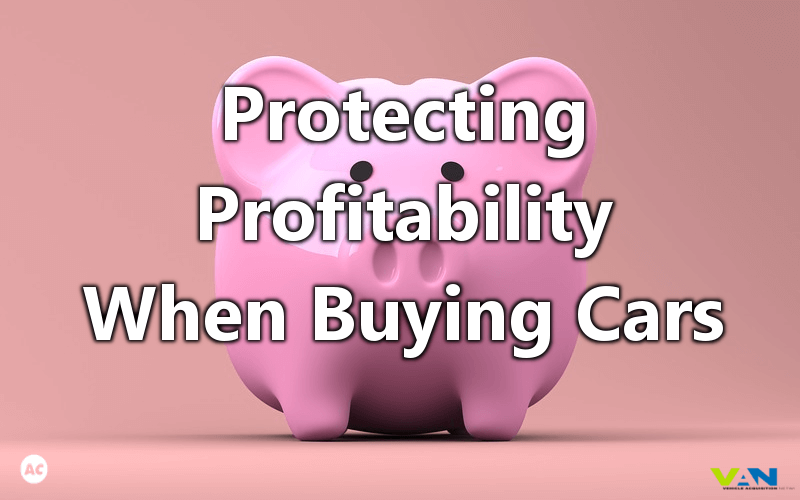Protecting Profitability When Buying Cars - 5 Top Tips

Buy low, sell high - no matter what sales you're in that's the golden rule. It may have come from the world of stocks but it's just as fitting when we look at everything from new stock to selling used cars. While you always want the best price, cheaper doesn't always mean better. Shopping around for the best deal will likely leave you chasing your tail and putting in a lot of research and late night hours with very little result.
Instead, we have put together five simple but effective tips you can use to protect your bottom line when scouting new inventory. These tips will help you find great deals, uncover hidden gems and protect your profitability as well as your solid reputation.
1. Know What You're Looking For
One of the biggest challenges in buying used cars inventory is that it is so easy to get caught up on the best bottom line deal. But the best deal in the world won't mean much if the inventory won't shift. This is why loal dealerships with roots in the community are so much better equipped to handle local needs and wants.
Know your community and your customer base. Don't jump into auction or private listings simply looking for vehicles you think will yield the highest return in the average market. Look for the vehicles you know your clients want and the ones you know they need. Sure, that lot of compact cars might be going for a song, but their lightweight bodies and poor performance in the snow will prevent them from moving on a lot in Montana during the winter.
2. Price More Than Just the Car
When evaluating cars at auction make sure you are taking all the costs associated with the car into account. That means having a ballpark on detailing, restoration and mechanical work if needed as well as transportation costs from the auction house to your lot.
Understanding the total cost of the car - beyond its base price - will allow you to better evaluate what's worth investing in and what's worth leaving on the block. Compare what you'd likely list the car at against other dealership prices for the same make and model. Once you have a clear idea of your costs and the compeition, it should make it easy to weed out cars that simply won't be worth the time.
3. Hold Buyers Accountable
Many dealerships are holding their buyers increasingly accountable for how a car performs in terms of conversion. One Northeast Honda dealer makes it clear they expect appraisers and buyers to perform at their best. They expect their team to purchase vehicles at or near a respective cost-to-market ratio of 80%–85%. When those benchmarks are not met, the dealer makes no qualms about having a conversation. When asked why they take such a hard line, their rationale is simple, "The market’s too competitive and our margins are too thin to give up our profit potential unnecessarily.”
4. Demand Quality
When you're buying new inventory for a dealership, you are essentially acting as an ambassador for your future customer. Buying a car that is selling for next to nothing might seem like a great deal ... until you find out it needs a new engine. When chasing deals and running up leads, be sure you don't let the heady rush of landing an amazing bargain cloud your judgement. Examine and test a vehicle as much as you'd expect your customer to - because they WILL. Weeding out and eliminating problems cars from the start will go a long way in protecting your reputation as a dealership with integrity.
5. Know When to Get Crazy (Within Reason)
While it's important to stock inventory that moves quickly, don't overlook the importance of stocking something unique to your area. Allow 10-20% of your auction or acquisition budget to be redirected to 'fun cars' or vehicles that may not sell quickly, but which will draw new customers to your lot.



